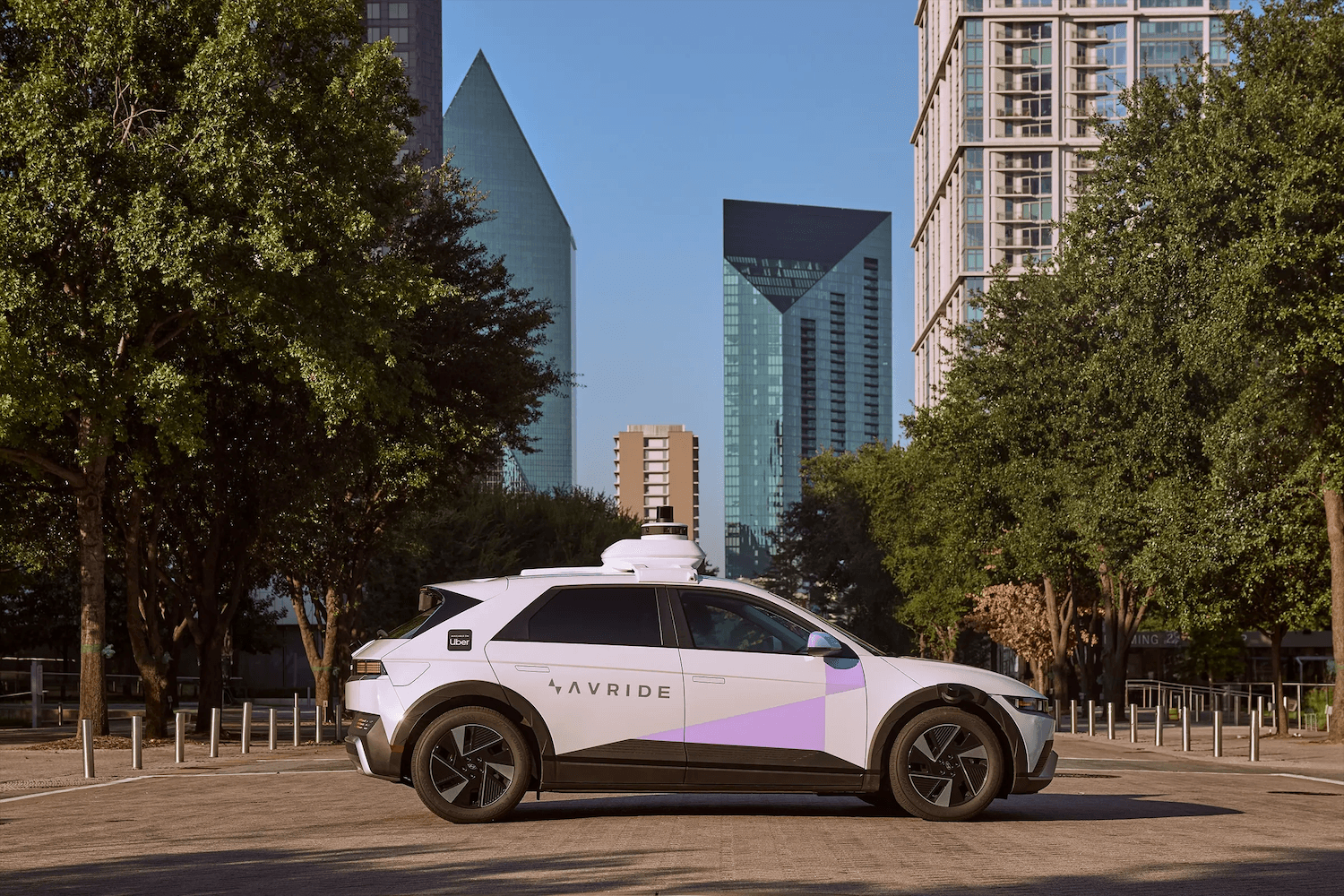Welcome to the Ride AI newsletter: your weekly digest of news and intelligence at the intersection of technology and transportation.
Now, Here’s What You Need To Know Today.
Avride is ramping up testing in Dallas ahead of its robotaxi launch with Uber later this year.
PC: Avride
The autonomous Hyundai IONIQ 5 vehicles, wrapped in Avride's distinctive lavender branding, are now a regular sight downtown and in surrounding neighborhoods as the team fine-tunes the vehicles for public ride-hailing service. Dallas, one of the largest ride-hailing markets in the U.S., will become the first city to host Avride and Uber's public robotaxi service.
The forthcoming robotaxi fleet will leverage Hyundai's IONIQ 5 EV platform, enhanced with Avride's autonomous driving technology, known for its efficiency, performance, and spacious design. The IONIQ 5 is also the base platform of Motional, which is currently testing in Las Vegas, and Waymo, which has said it will launch their IONIQ 5 based robotaxis by 2027.
The robotaxi service builds on Avride's broader partnership with Uber, where Avride's autonomous delivery robots have already completed tens of thousands of Uber Eats orders in cities such as Dallas, Austin, and Jersey City. Avride was formerly Yandex’s self-driving car group, which was spun out of Yandex in 2020.
Uber and Momenta will test fully driverless cars in Germany starting in 2026.
PC: Momenta
The companies say they will test Level 4 autonomous vehicles in Munich, marking another step in Europe’s journey to commercial robotaxi services. If everything goes according to plan in Munich, Uber says that Momenta robotaxis could be coming to additional European cities in the years to come.
Momenta is based in Shanghai, where it currently operates its own robotaxi service. Earlier this year, Uber said it would allow the company to add its robotaxis to its ridehailing platform in cities outside the US and China. Uber also said that Momenta's robotaxis would feature safety monitors behind the wheel at launch, before eventually transitioning to fully driverless vehicles.
Momenta, which has received funding from China's state-owned SAIC Motor, GM, Toyota, Mercedes-Benz, and Bosch, currently supplies driver assist software to a number of automakers. Though Europe currently does not have any commercial robotaxi services, it's starting to see more robotaxi action that signals the floodgates could soon be open. In addition to Uber and Momenta, China's Baidu and Lyft plan on bringing driverless taxis to the UK and Germany in 2026.
Finally: The US government is updating specifications for windshield wipers to facilitate autonomous vehicle deployment.
US Secretary of Transportation Sean Duffy announced Thursday that rules for windshield wipers, de-icing and demisting systems are to be revised, with plans to ease requirements for lights as well. The regulations were drawn up decades ago and do not take automated vehicles into account, he explained.
“Federal Motor Vehicle Safety Standards were written for vehicles with human drivers and need to be updated for autonomous vehicles. Removing these requirements will reduce costs and enhance safety. NHTSA is committed to supporting the safe development of advanced technologies and advancing a new era of transportation,” NHTSA Chief Counsel Peter Simshauser said.
The change is largely being welcomed by the car industry. Countries like China already have regulations, both auto industry self-imposed and government imposed, for autonomous and semi-autonomous vehicles. For example, it has become fairly standard practice for automakers in China to add blue lights, similar to side turn signals, to their vehicles that turn on when the vehicle enters L2 or L3 autonomy modes.
Waymo comes to San José Mineta International Airport, but not SFO.
PC: San José Mineta International Airport
Waymo has received authorization to operate commercially on airport premises, with rollout happening in stages beginning with fully-autonomous testing with Waymo employees, followed by a commercial launch for the public later this year. SJC is expected to be the first commercial, international airport in California and the second in the world to welcome Waymo to its terminals.
Upon future commercial launch, passengers will be able to hail a Waymo autonomous vehicle via the Waymo app upon landing. The vehicle will arrive at one of SJC's two Ground Transportation Centers in Terminal A or B to dispatch passengers to their destination within the San Francisco Bay Area service area.
This marks the first airport in California, and the second airport in the United States, to offer commercial robotaxi services. In 2022, the Phoenix airport started allowing Waymo to service passengers via the Sky Train stations. However, the outlook for the San Francisco International Airport is not as certain. While Mayor Daniel Lurie has given Waymo the green light to map SFO’s roads, the airport authority is still in permitting negotiations with the robotaxi service.
Anti-Johnny Cab: Shoplifters try to escape via Waymo, get arrested immediately
Did you ever watch the 1990 movie Total Recall starring former governor of California Arnold Schwarzenegger? In that movie, Schwarzenegger’s character, Quaid, hails an autonomous taxi to escape arrest. The taxi service, called Johnny Cab, was able to help Quaid mostly evade capture.
Things are different in real life, however. A pair of shoplifters tried to escape by Waymo, only for the robotaxi to pull over as soon as the police in pursuit flashed their sirens. It’s hard to imagine a more ill-suited, more law-abiding vehicle one could escape in.
In Other News…
- Qualcomm teams up with BMW on a new driver assist system.
- Waymo is a trillion-dollar opportunity. Google just needs to seize it.
- The right voice ups trust in self-driving cars.
Alright, that’s it from me… until next week. If you enjoy this newsletter, share it with your friend, colleague, or boss. Thank you for reading; Sophia out!
